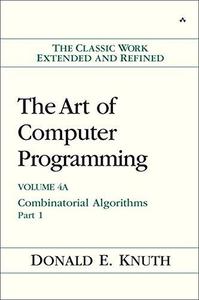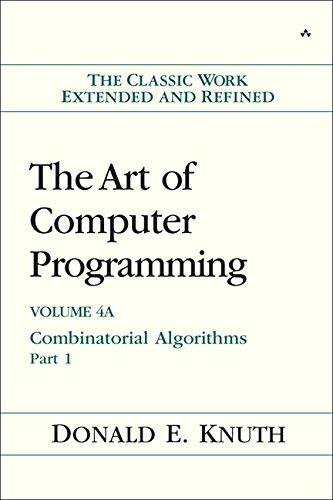The art of computer programming. Volume 4A, Combinatorial algorithms, Part 1 By Donald Ervin Knuth
2011 | 901 Pages | ISBN: 0201038048 | DJVU | 10 MB
2011 | 901 Pages | ISBN: 0201038048 | DJVU | 10 MB
While many think of algorithms as specific to computer science, at its core algorithmic thinking is defined by the use of analytical logic to solve problems. This logic extends far beyond the realm of computer science and into the wide and entertaining world of puzzles. In Algorithmic Puzzles, Anany and Maria Levitin use many classic brainteasers as well as newer examples from job interviews with major corporations to show readers how to apply analytical thinking to solve puzzles requiring well-defined procedures.The book's unique collection of puzzles is supplemented with carefully developed tutorials on algorithm design strategies and analysis techniques intended to walk the reader step-by-step through the various approaches to algorithmic problem solving. Mastery of these strategies--exhaustive search, backtracking, and divide-and-conquer, among others--will aid the reader in solving not only the puzzles contained in this book, but also others encountered in interviews, puzzle collections, and throughout everyday life. Each of the 150 puzzles contains hints and solutions, along with commentary on the puzzle's origins and solution methods. The only book of its kind, Algorithmic Puzzles houses puzzles for all skill levels. Readers with only middle school mathematics will develop their algorithmic problem-solving skills through puzzles at the elementary level, while seasoned puzzle solvers will enjoy the challenge of thinking through more difficult puzzles Preface Notes on the Exercises Chapter 7: Combinatorial Searching 1 7.1: Zeros and Ones 47 7.2: Generating All Possibilities 281 Answers to Exercises 514 Appendix A: Tables of Numerical Quantities 818 Appendix B: Index to Notations 822 Appendix C: Index to Algorithms and Theorems 828 Appendix D: Index to Combinatorial Problems 830 Index and Glossary 834



